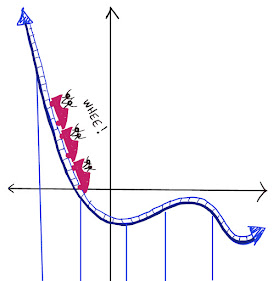For each scale, start by taking off as many blocks as you can from each side (if any) while keeping the scale balanced.
Saturday, August 13, 2016
Tuesday, April 19, 2016
Saturday, April 9, 2016
Tuesday, March 1, 2016
Tuesday, January 26, 2016
Monday, January 11, 2016
Subscribe to:
Posts (Atom)
PLAYFUL MATH BLOG CARNIVAL #163
BLOG CARNIVAL #163....LET'S GO! Fun fact: The number 163 is prime, which we can prove simply by showing that it is not divisible by 2, 3...









